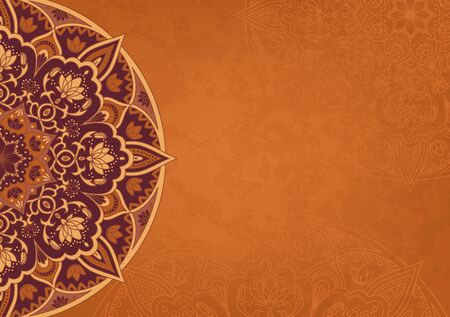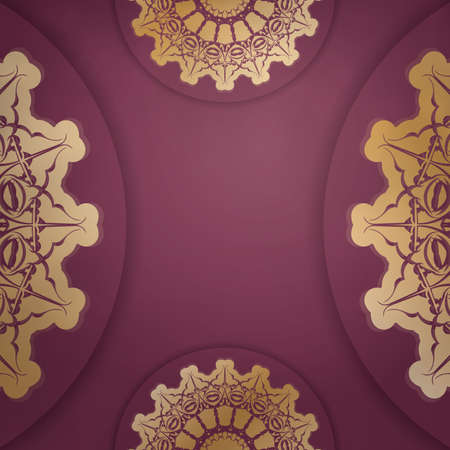The Rich Legacy of Indian Traditional Designs
India’s artistic heritage is a treasure trove of vibrant patterns and time-honoured motifs that reflect the nation’s deep-rooted cultural identity. From the lush valleys of Kashmir to the sun-kissed coasts of Tamil Nadu, every region brings forth its unique style, each with a story to tell. Iconic paisleys, for instance, hold a special place in Indian textiles, symbolising fertility and life. Mandalas, found in spiritual and decorative art, represent unity and wholeness—a reflection of India’s philosophical traditions. Distinct folk arts like Madhubani from Bihar captivate with their bold colours and mythological themes, while Warli art from Maharashtra uses simple geometric forms to depict daily village life and rituals. The grandeur of Mughal patterns, with intricate floral and arabesque designs, showcases the fusion of Persian artistry with Indian craftsmanship. These designs are not merely aesthetic; they are vessels carrying centuries-old wisdom, beliefs, and regional pride. As we embrace modern designing software, there lies an exciting opportunity to revive these traditional forms—ensuring they remain a living part of contemporary Indian culture while honouring their timeless significance.
Challenges in Preserving Traditional Art Forms
In today’s rapidly evolving world, preserving Indian traditional designs has become a significant challenge. As the nation embraces urbanisation and digitalisation, many age-old art forms are at risk of fading into obscurity. There are several hurdles faced by artisans and communities striving to keep these crafts alive.
Diminishing Artisanship
With changing lifestyles and the lure of modern jobs, fewer young people are interested in learning traditional crafts. Many master artisans struggle to find apprentices willing to dedicate years to mastering intricate techniques, leading to a gradual decline in skilled craftsmen.
Limited Market Demand
The demand for traditional designs is often overshadowed by mass-produced goods that are cheaper and more accessible. This shift in consumer preference reduces the economic incentive for artisans to continue their craft, making it harder for them to sustain their livelihoods.
Comparing Traditional Crafts vs. Modern Products
| Aspect | Traditional Crafts | Modern Products |
|---|---|---|
| Production Time | High (Handmade) | Low (Machine-made) |
| Cost | Higher (Labour-intensive) | Lower (Mass production) |
| Cultural Value | Rich Heritage | Minimal Cultural Significance |
| Market Demand | Niche Audience | Mass Market Appeal |
The Risk of Losing Rare Design Forms
Many unique regional patterns and motifs have already disappeared or survive only in limited regions. Without proper documentation and promotion, these rare design forms could be lost forever, erasing valuable parts of India’s cultural identity.
The Impact of Urbanisation and Digitalisation
While urbanisation brings new opportunities, it also creates a disconnect between younger generations and their cultural roots. Digitalisation has made information more accessible but has not always translated into support for traditional crafts. However, it also presents an opportunity—by leveraging technology, there is potential to revive interest and appreciation for these beautiful Indian designs.

3. Designing Software as a Catalyst for Revival
In today’s rapidly evolving creative landscape, designing software has emerged as a powerful catalyst in reviving and preserving the rich tapestry of Indian traditional designs. With advanced tools like AutoCAD, Adobe Illustrator, and CorelDRAW, Indian artists and designers now have the unprecedented ability to reinterpret age-old motifs in contemporary contexts, while staying true to their roots. These technologies offer precise control over intricate patterns found in Indian textiles, rangoli art, Madhubani paintings, and Mughal architecture, making it possible to experiment without fear of losing authenticity.
Modern design software empowers creators to digitise hand-drawn sketches of paisleys or mandalas, enhance them with vibrant colours inspired by local festivals such as Holi and Diwali, and adapt the designs seamlessly for various applications — from saree borders to digital invitations. By leveraging features like layering, vector tracing, and scalable graphics, even minute details traditionally woven or painted by hand can be faithfully preserved and reused across different mediums.
This marriage of technology with heritage not only makes traditional Indian designs accessible to a new generation but also opens doors for global appreciation. Designers from Mumbai to Chennai can collaborate online, exchange ideas instantly, and share their work with communities worldwide. Such connectivity ensures that regional aesthetics — whether it’s the geometric symmetry of Rajasthan’s block prints or the delicate florals of Kashmiri embroidery — are celebrated beyond local markets.
Furthermore, these software solutions make it easier for artisans who may not have formal training in digital tools. Many platforms offer Hindi and other regional language support, intuitive interfaces, and community tutorials tailored for Indian users. This inclusivity encourages more artists from diverse backgrounds — whether they are seasoned professionals or young students passionate about their cultural legacy — to participate in this creative revival.
Ultimately, designing software acts as a bridge between tradition and innovation. By empowering Indian creators with modern tools rooted in cultural understanding, we ensure that our timeless artistic expressions not only endure but flourish in the digital era.
4. Blending Heritage with Modern Digital Techniques
Indian traditional designs are renowned for their intricate motifs, vibrant colour palettes, and deep cultural symbolism. Today, design software acts as a bridge between these timeless patterns and modern innovation. By digitising heritage motifs, designers can preserve the essence of Indian artistry while exploring new possibilities. With advanced features available in popular designing tools, artisans and creators can easily customise patterns, experiment with textures, and adjust scales—all while staying true to traditional aesthetics.
Digitising Motifs for Preservation and Innovation
One of the most valuable contributions of design software is the ability to digitise hand-drawn or historical motifs. This process not only safeguards heritage patterns from fading away but also makes them accessible for reinterpretation. For example, a centuries-old paisley motif from Kashmir can be scanned, vectorised, and enhanced using digital tools. This allows designers to maintain the original charm while adapting it for contemporary products such as sarees, home décor, or even mobile wallpapers.
Customising Patterns with Flexibility
Traditional Indian designs often follow specific rules in terms of layout and repetition. Design software empowers creators to break or adapt these rules based on project requirements. Here’s how digital tools enable customisation:
Design Element |
Traditional Approach |
Digital Approach |
|---|---|---|
Motif Placement |
Fixed by hand-blocks or stencils | Easily moved, resized, or layered digitally |
Pattern Repeat |
Manual alignment; prone to errors | Perfectly aligned using repeat tools |
Colour Experimentation |
Limited by available dyes/pigments | Instant preview of endless combinations |
Texture Application |
Physical materials only (silk, cotton) | Simulated digitally before production |
Scaling Designs |
Difficult without redrawing each size | Scalable vectors maintain clarity at any size |
Experimenting While Staying Rooted in Tradition
The beauty of blending Indian heritage with digital techniques lies in respectful experimentation. Designers can try bold new colour palettes—such as fusing classic indigo with modern neon pink—or test out unusual pattern placements without permanently altering the original artwork. These experiments can be instantly visualised on various mockups such as textiles, ceramics, or jewellery pieces. Yet, the foundation remains authentically Indian thanks to the preservation of original forms and motifs.
This harmonious blend encourages both established artisans and young creators across India to celebrate their roots while embracing technology. As we continue reviving Indian traditional designs through innovative software solutions, every creation becomes a tribute to our rich cultural legacy—adapted beautifully for today’s world.
5. Empowering Artisans and Creating New Market Opportunities
In the journey of reviving Indian traditional designs with designing software, a significant transformation is taking place in how local artisans connect with the world. Digital platforms and e-commerce websites like Amazon India, Flipkart, and niche portals such as Craftsvilla and Jaypore are now bridging the gap between skilled craftsmen from villages and urban centres, and customers across the globe. Through these digital avenues, artisans who once relied solely on local haats or exhibitions can now showcase their unique block prints, handwoven sarees, or intricate Madhubani art to an international audience.
Collaborative projects are also playing a crucial role in this shift. Design studios and NGOs often organise workshops where traditional artisans learn how to use modern design software, such as Adobe Illustrator or CorelDRAW, to digitise their heritage motifs. This not only helps them preserve their craft but also opens up new possibilities for customisation and contemporary adaptation—be it for home décor, fashion, or graphic branding. These collaborations encourage a healthy exchange of ideas between designers and craftsmen, leading to innovative products that honour tradition while appealing to modern tastes.
The economic impact is equally profound. By leveraging digital marketplaces, artisans receive fairer prices for their creations and greater recognition for their skills. Initiatives like ‘Make in India’ further promote these crafts on both domestic and global stages, enhancing the pride associated with Indian heritage arts. Crowdfunding platforms and social media campaigns give artisans new tools to tell their stories, build brands, and attract loyal customers who value authenticity.
Through these efforts, designing software becomes more than just a tool—it acts as a bridge connecting India’s rich artistic legacy with the aspirations of today’s generation. It empowers artisans not only economically but also instills cultural pride among younger members of artisan communities. Families see real benefits from digital literacy and market access, inspiring them to continue practising age-old crafts rather than seeking alternative livelihoods.
As we move forward, it is essential for government bodies, private organisations, and design professionals to foster these initiatives further. By investing in digital training and infrastructure at the grassroots level, India can ensure that its treasured crafts thrive in the digital era—creating sustainable livelihoods and keeping cultural traditions alive for generations to come.
6. The Future of Indian Designs: Fusion & Innovation
As we look ahead, the marriage between Indian traditional designs and cutting-edge designing software promises a vibrant future for our creative heritage. With every update in technology, young Indian designers are gaining powerful tools that allow them to reinterpret time-honoured motifs, from paisleys to madhubani, in fresh and unexpected ways. Designing software opens up endless possibilities—not only can artisans digitise intricate patterns with greater accuracy, but they can also experiment with colour palettes, layouts, and even 3D visualisations, making it easier to pitch ideas to clients or collaborate globally.
This digital empowerment is fostering a new generation of design innovators who respect the past while shaping the present. Many up-and-coming creators are blending traditional aesthetics with modern sensibilities, leading to stunning fashion lines, contemporary home décor, and impactful branding identities that remain rooted in Indian culture. The ability to easily share digital designs across platforms further ensures that regional art forms—whether it’s Pattachitra from Odisha or Phulkari from Punjab—find audiences far beyond their origin states.
Looking forward, the evolution of designing software will continue to break down barriers for aspiring artists. With AI-driven tools and cloud-based collaboration, even those from remote towns can access learning resources and showcase their talents on a national and global stage. As more brands embrace this fusion of tradition and technology, we can expect Indian design to shine brighter in the international arena.
Ultimately, the legacy of Indian traditional art is set not just to survive but to thrive—reimagined by passionate youth who honour their roots while pushing creative boundaries. The journey of reviving Indian designs using digital tools is only just beginning, and its impact on fashion, décor, and branding will echo for generations to come.


